Dental Treatment for Brisbane’s Most Anxious Patients with Laughing Gas
Anxiety towards dental treatments is often experienced both by children and adults. Dental anxiety can happen before simple procedures like injections or traumatic procedures such as tooth extraction. Perhaps anxiety is inevitable in dental surgeries. Sedation is used in many dental clinics to manage and reduce dental anxiety. “Sedation makes an anxiety-provoking situation more tolerable”, Brisbane Dentist. Small doses of happy gas can induce a pleasurable feeling and assist anxious patients in better tolerating a moderately painful treatment.
Pain-Free Dentist Brisbane
Anxious Patients May Cry Because They Have No Other Choice. Compared to children, adults can better repress their feelings and anxiety but probably adults are as anxious as children when it comes to injection or tooth extraction. Adults have the option of avoiding, procrastinating or cancelling their dental appointment whereas children do not have this option, therefore they show their anxiety with crying, etc. click here to see how you can deal with dental anxiety in children.
Sedation techniques in dentistry are not absolutely pain-free, however, there are techniques that dentists use to manage pain and anxiety in patients. Laughing gas dulls pain and helps reduce anxiety. It does not provide a 100% pain-free sedation when you are experiencing significant pain. In addition to laughing gas, your dentist may also use local anaesthesia (numbing medication) in your mouth to achieve better results.
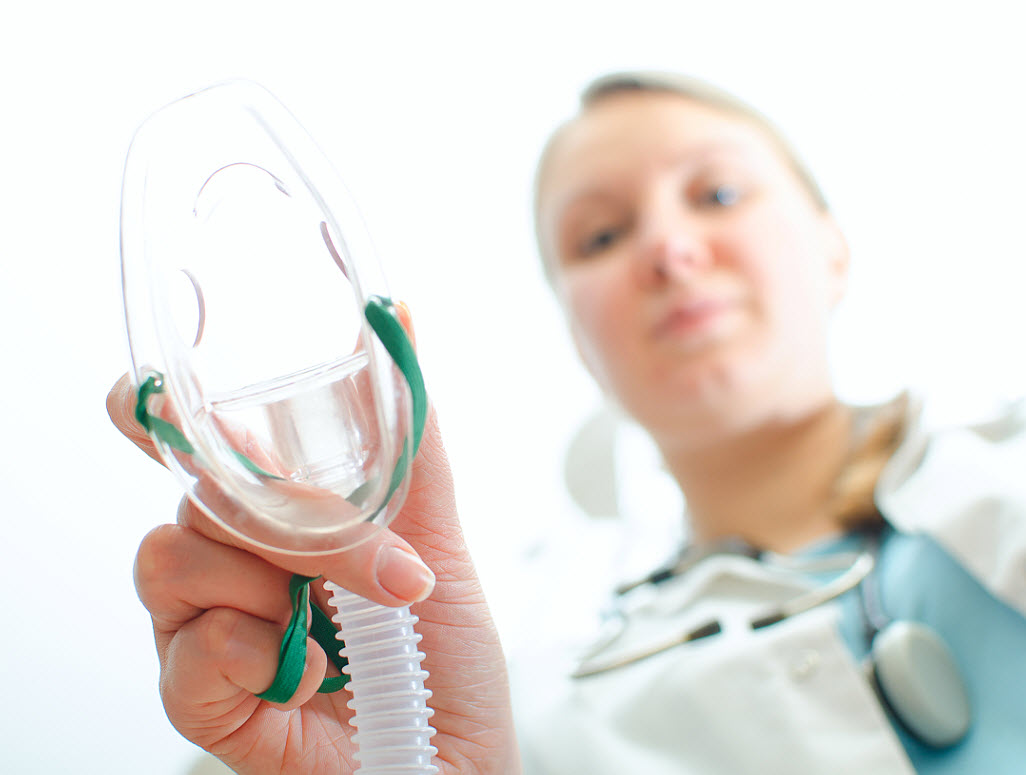
Happy Gas vs Sleep Dentistry
Laughing gas is conscious sedation; some incorrectly call it “sleep dentistry”. Happy gas involves a quicker recovery period and fewer postoperative complications than sleep dentistry using general anaesthesia, the choice between nitrous oxide and general anesthesia depends largely on the type and complexity of the dental procedure, the patient’s medical condition, and other factors.
Generally, laughing gas administered during dental treatments does not prevent you from driving after the procedure. Laughing gas tends to wear off quickly when the gas valve is closed. But check and communicate with your dentist if you can leave 5 to 15 minutes after your treatment. General anesthesia, on the other hand, involves completely putting the patient to sleep during the procedure. It is typically not used for short routine dental procedures such as cleanings, root canals, or fillings. It is usually reserved for complex and lengthy dental procedures or patients with severe dental anxiety.
Happy Gas vs IV Sedation
Regarding pain control during a dental procedure, IV sedation is superior to nitrous oxide. As for recovery times, recovery time is shorter after nitrous oxide-oxygen sedation than after IV sedation. The clinical recovery time is the time until discharge from the clinic after a dental procedure. When it comes to patient comfort levels, both nitrous oxide and IV sedation have their advantages and ideal uses. Nitrous oxide sedation is generally a good option for patients who require basic dental work or routine dental procedures. It helps patients reach a calm and relaxed state without needing needles or medications taken before the visit. It’s not usually ideal for patients who need oral surgery or lengthy dental work.
The use of each of these sedation methods is situational, and the ideal option varies from patient to patient and from procedure to procedure. Some patients may be better suited for nitrous oxide sedation if their anxiety level is low to moderately low and the dental work doesn’t involve using needles. Other patients may require IV sedation because of the deeper level of sedation that can be achieved, especially for more invasive or lengthy procedures.
Pain Relief: Care for Anxious Patients in Dental Pain
N2O, also commonly known as Laughing Gas, Happy Gas, Magic Air or Sweet Air, is a sedative with a safe application history of nearly two centuries. Since its introduction, laughing gas has remained a popular sedation option. When used safely, it can kill or reduce dental pain. Laughing gas is administered by inhalation in conjunction with oxygen.
Happy Gas for Tooth Extraction Pain Relief
Laughing gas has been used as a sedative in dentistry since 1844. Some dentists used this gas to control pain during tooth extraction. Patients normally feel a euphoric feeling spread throughout their body approximately after about 5 minutes of inhaling the gas. Happy gas has pain-reducing effects and cannot kill significant pain. It assists with the acceptability of unpleasant procedures.
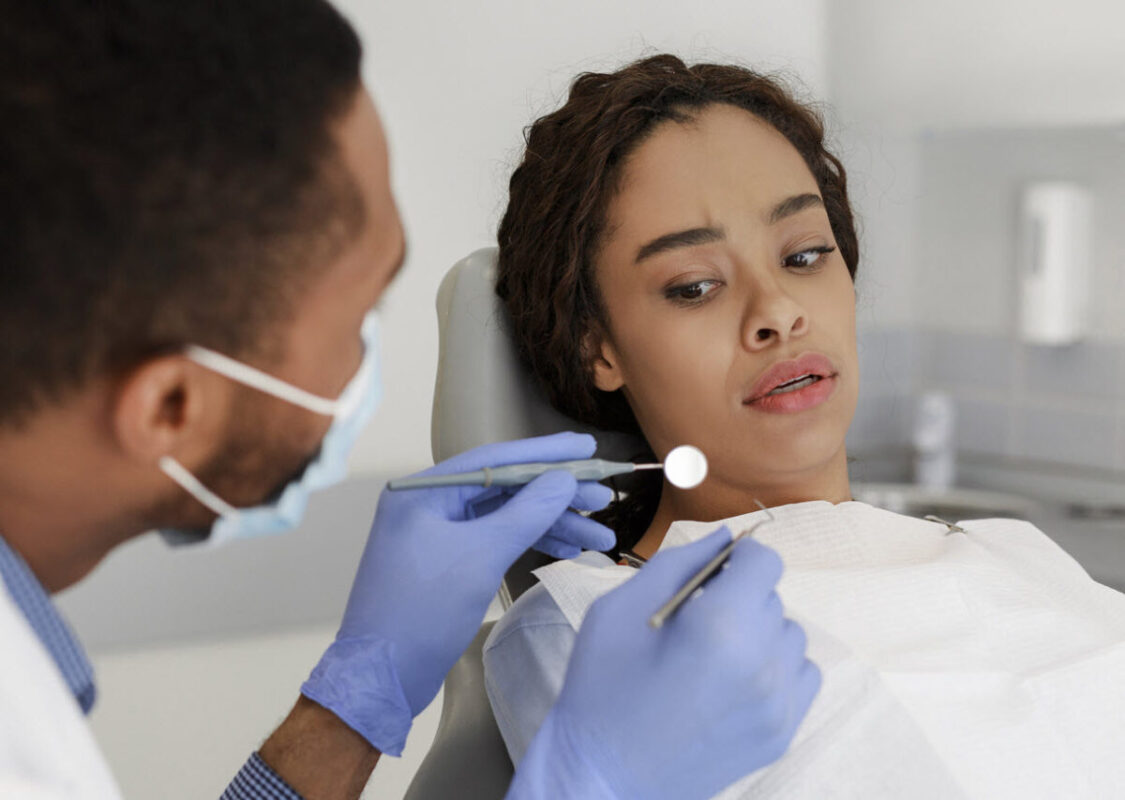
Laughing Gas is Needle-Free and Quick
Happy gas is an appealing procedural sedative for patients with significant needle phobia because it is applied without needles and has a rapid onset and recovery which is an ideal characteristic for a sedative. In dentistry, laughing gas may be used to provide moderate sedation for procedures that are minimally to moderately painful.
The needle-free application of the laughing gas can be used to mitigate needle phobia in some patients. It can also make patients more receptive of being injected. In fact, many people who are sedated by laughing gas inhalation, often won’t remember being injected during the procedure.
Unlike other sedatives used by dentists e.g. Lidocaine, laughing gas starts working quickly after the patient begins to inhale it. The gas also wears off just as fast once it is removed from the patient. After your treatment under laughing gas, you can check with your dentist to see if it is OK to drive or not.
What Does Laughing Gas Do
When laughing gas is inhaled alone it can cause euphoric effects. When administered as a mixture with oxygen, it puts the patient in conscious sedation. Laughing gas is not intended to put a dental patient into sleep.
The mixture of Laughing gas with oxygen (Laughing gas/Oxygen mixture) has sedative properties. The mixture is inhaled normally through a nose mask. When a safe and controlled amount of the mixture is inhaled, patients can feel relaxed and sedated. After breathing the gas, within a few minutes, you may feel heaviness or tingling in your legs and arms. You may also feel light-headed. Eventually, you should feel calm and comfortable.
Unsafe amounts of laughing gas can be harmful, cause hallucination and death. Dentists use a machine to deliver safe amounts of the mixture which is required for conscious sedation. Within a few minutes after the laughing gas machine is shut off, the gas is breathed out of the patient’s lungs. Laughing gas has low solubility and therefore exists rapidly from the body.
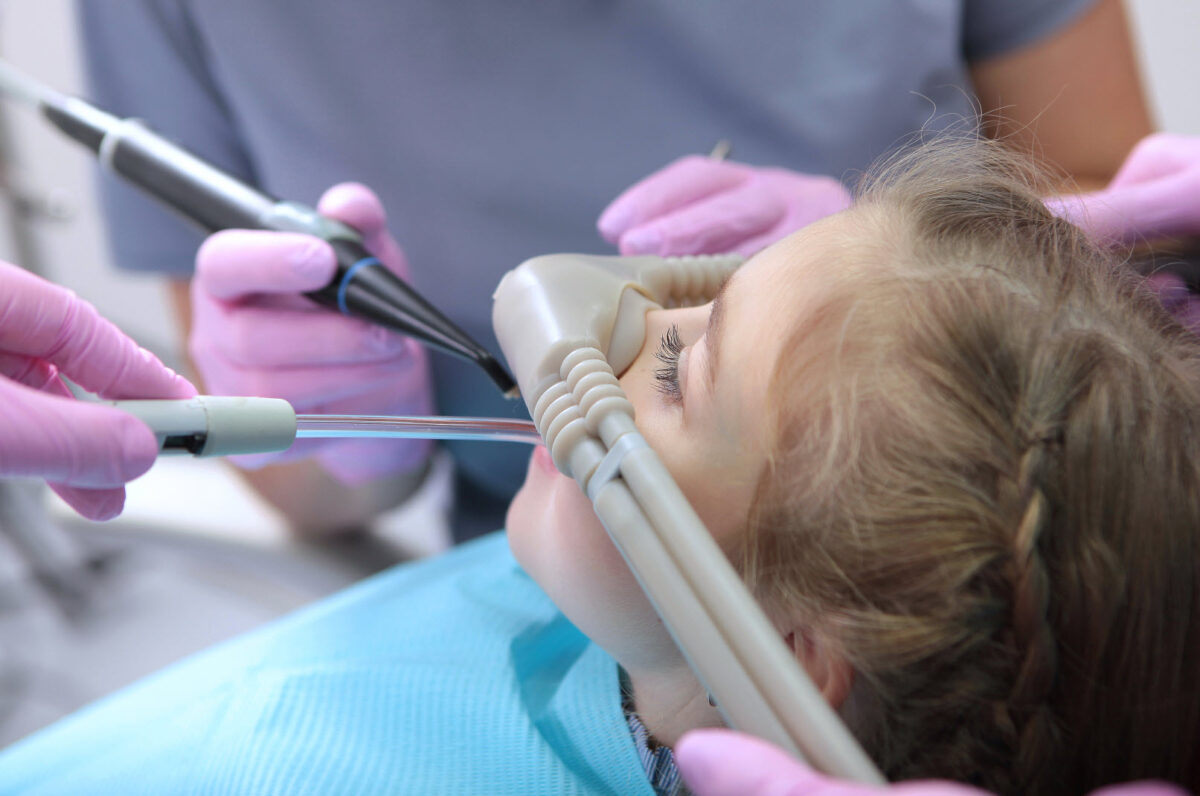
Can You Still Feel Pain with Laughing Gas?
Laughing gas can kill slight and minor levels of pain. It is used to reduce or ease discomfort and mild levels of anxiety. Injection, for example, is not considered an extremely painful procedure. Some patients may not notice injections when sedated with happy gas. Nitrous oxide does not relieve significant pain, so an additional anesthetic like Local Anaesthesia is typically used during the procedure to prevent discomfort. Significant pain can be managed with more superior sedation methods like IV sedation or Sleep Dentistry using General anaesthetics.
What are the Risks of Laughing Gas
The use of Laughing Gas in dental treatment is generally considered safe with few adverse effects. The most common adverse effects, found in 1-10% of patients, are nausea and vomiting, which are associated with nitrous oxide concentrations of more than 50% and multiple repeated fluctuations in concentration increases and decreases. Importantly, nitrous oxide-oxygen has no toxic effects during clinical use for sedation at proper concentrations.
Side Effects of Dentist Laughing Gas
Happy gas is generally safe for use in dental treatments for both children and adults, but there can be some side effects. Most people do not experience any adverse side effects, but few people do.
Most of the adverse events are gastrointestinal and neuropsychiatric disorders. The main factors associated with adverse events are age, concomitant drug administration, and longer duration of inhalation. Among the serious adverse events reported, only 0.03% is possibly attributed to the nitrous oxide-oxygen premix.
In the context of children, a study indicated that only 2.7% of children report side effects, and it was concluded that nitrous oxide-oxygen proved to be an effective and safe method for achieving a good level of cooperation in younger children. Side effects can vary depending on individual health conditions, the specific dental procedure, and other factors. Always consult with our dentist for information tailored to individual circumstances.
Who may Benefit from Laughing Gas Sedation?
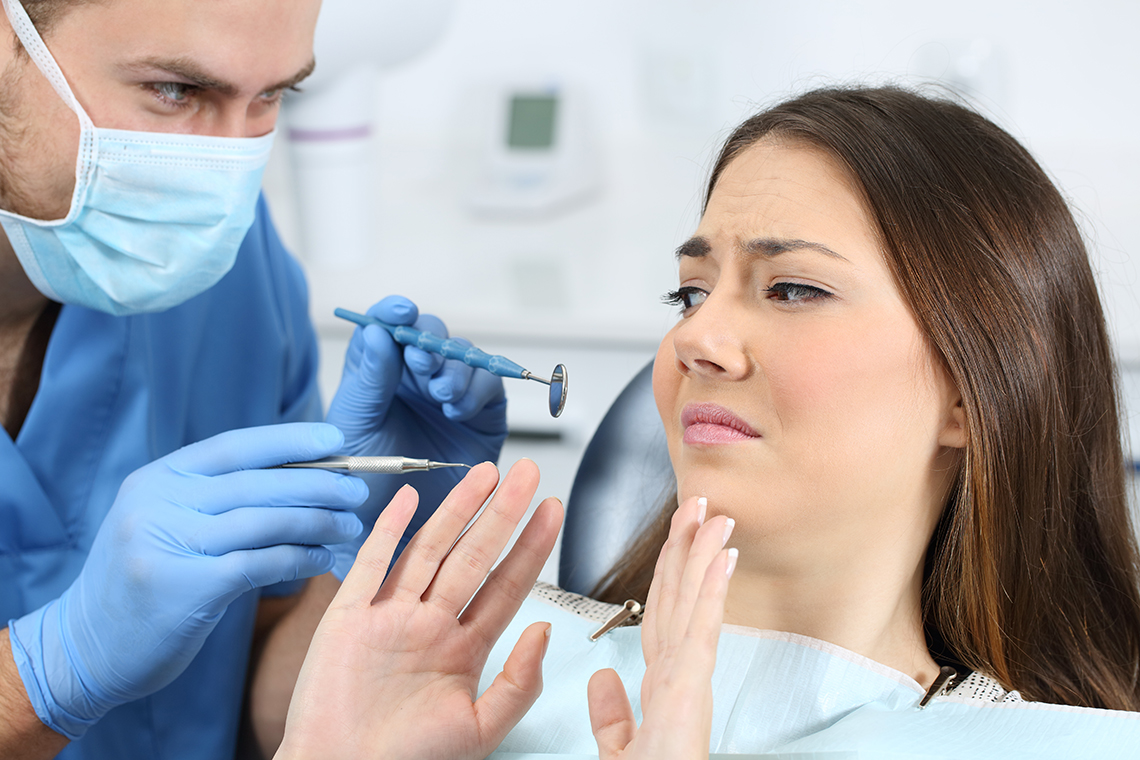
If anxiety is preventing you from going to the dentist, then administration of laughing gas by your dentist may help you manage and overcome your anxiety. Happy gas can be used for people with:
- Gag reflex
- Very low pain threshold
- Very sensitive teeth
- Children who can’t sit still in the dental chair
Sedation Dentistry for Children in Brisbane
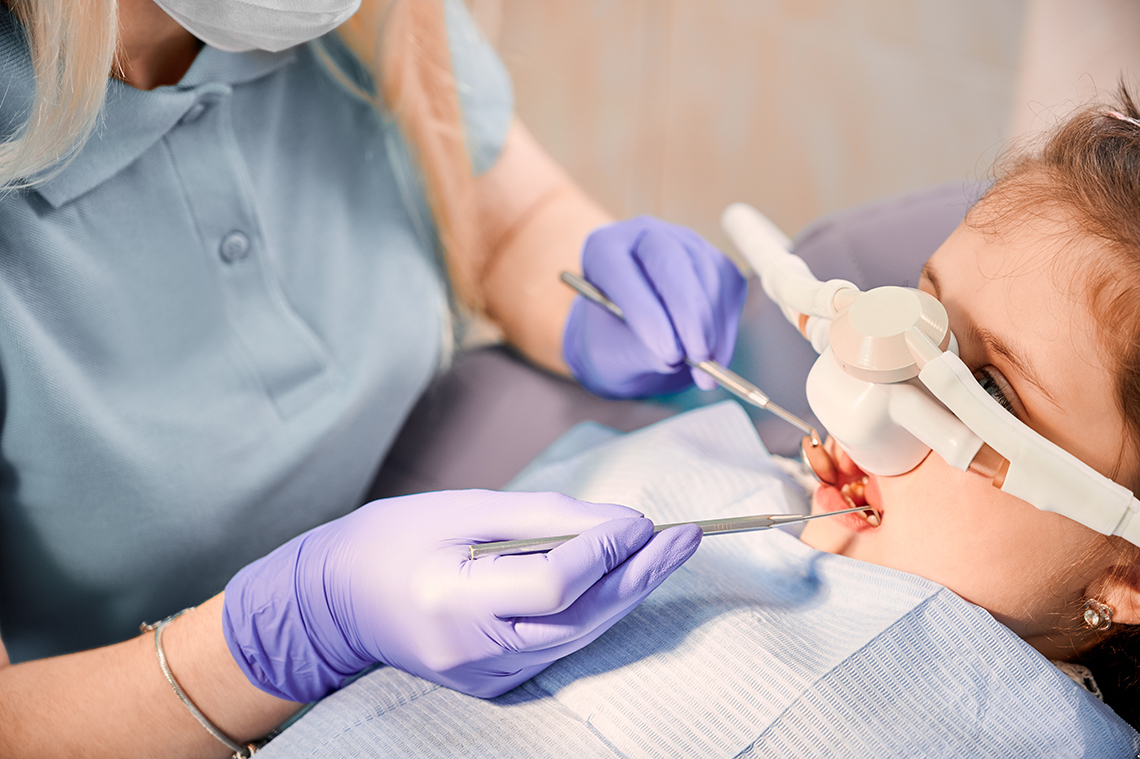
The American Academy of Pediatric Dentistry, AAPD, recognizes laughing gas as a safe technique to reduce anxiety in children. Laughing gas can be used as an effective technique to enhance child-dentist communication. Some kids dentists administer laughing gas to children to protect them against traumatizing and prevent bad experiences in dental clinics. When used appropriately, laughing gas is safe for children’s dentistry.
For children, laughing gas can be administered to:
- Reduce gagging
- Elevate pain threshold
- Reduce child anxiety in the dental chair
- Raise tolerance for a long treatment
- Reduce undesired movements in the dental chair
Pain Free Dentist Brisbane Southside
It is hard to say if pain-free dentistry exists (see sleep dentistry for a pain-free experience during the dental procedure). People have different pain thresholds. The injection can be tolerable for some people and intolerable for others. Laughing Gas can dull pain and calm people with dental anxiety. But it cannot be 100% pain-free. Laughing gas (also called happy gas) is colourless and slightly or somewhat sweet in taste and smell. In the past 180 years, happy gas has been used by dentists as an anaesthetic (something that induces insensitivity to pain).
Laughing gas was discovered in 1772. People would pay to breathe in tiny amounts of happy gas to laugh. The application of happy gas in dentistry goes back to 1844 when a man who had a bad cut and breathed in laughing gas sat next to a dentist and told the dentist that he could not feel any pain and did not know he had a cut. That dentist was Dr Horace Wells, an American dentist who found that laughing gas can dull pain. He applied laughing gas to dentistry. He had his tooth removed while inhaling happy gas to demonstrate the application of laughing gas in dental treatments.
Sedation Dentistry Brisbane
It is normal to experience some level of anxiety on the dental chair. We can help you perhaps overcome or maybe reduce your dental anxiety to some extent. When laughing gas is administered in small doses, it provides the patient with a feeling of mild sedation. Inhaling happy gas (laughing gas) dulls pain and is therefore used in medical treatments as a pain killer. Like many pain killers, it does not sedate significant pain. It is only effective with moderate levels of pain e.g. injections and mild dental surgeries like tooth extractions, etc. it is also effective in calming patients who are anxious about their visit to the dentist.
Dental Treatment Under General Anaesthesia (GA)
Dental treatment under general anaesthesia or dental treatment under GA is a different method of managing pain. It is usually done by a dentist and a team of nurses and GA specialists in a hospital. See Brisbane Dental Sedation and Sleep Clinic or click here to learn about Sleep Dentistry under GA in Brisbane.
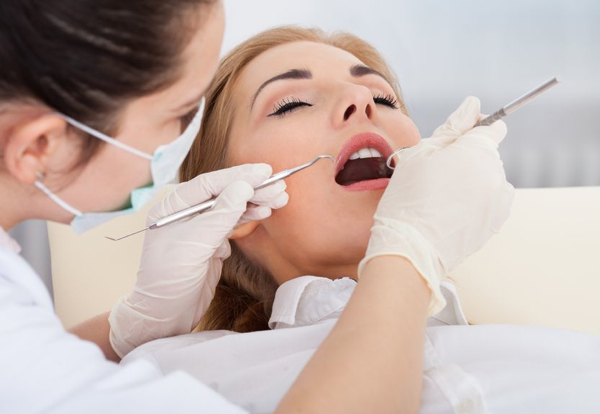
Brisbane Emergency Dentist with Happy Gas
Pure Dentistry is a provider of Emergency dental care in Brisbane. The clinic is equipped to provide emergency dental care for residents of Brisbane. In case of a dental emergency, call 07 3343 4869. We will try to fit you in on the same day or the day after. A wide range of dental services is provided in extended hours, seven days a week. You can book your appointment online 24/7 directly from our website: puredentistry.com.au
Laughing Gas is an old and quite popular type of sedation used in many dental clinics across Australia. It can dull pain for patients, reduce anxiety and put nervous patients into a calm, relaxed state. If you are nervous about your treatment, advise our team in Pure Dentistry and ask your dentist if you can benefit from laughing gas sedation.
Book an appointment with one of our dentists now or call 07 3343 4869.




































